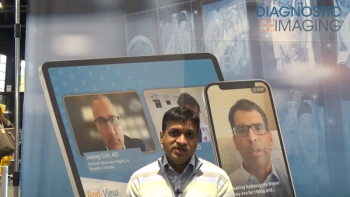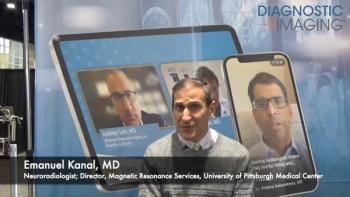
For Rectal Cancer Staging, Structured MRI Report Preferred
Structured MRI reports improve staging for rectal cancer.
A voluntary structured report template improves the quality of rectal cancer staging MRI reports, according to a study published in the
Researchers from Brigham and Women's Hospital in Boston, MA, sought to assess the impact of implementing such a structured report on the quality of MRI reports for rectal cancer staging. Various organizations have recommended standardized reporting, including the European Society of Gastrointestinal and Abdominal Radiology.
A total of 106 MRI reports from 104 patients (mean age, 60; 58.5% male) were identified for inclusion in the study covering 12 months before and after implementation of the report template, which took place on July 2, 2013. Fifty-two (49.1%) reports were completed before implementation of the structured report template.
Fourteen quality measures were predefined by three abdominal radiology subspecialists at the facility:
• Rectal segment location
• Radial location
• Distance from anorectal junction or internal anal sphincter[[{"type":"media","view_mode":"media_crop","fid":"42500","attributes":{"alt":"","class":"media-image media-image-right","id":"media_crop_7045644199705","media_crop_h":"0","media_crop_image_style":"-1","media_crop_instance":"4611","media_crop_rotate":"0","media_crop_scale_h":"0","media_crop_scale_w":"0","media_crop_w":"0","media_crop_x":"0","media_crop_y":"0","style":"height: 200px; width: 200px; border-width: 0px; border-style: solid; margin: 1px; float: right;","title":"©All Vectors/Shutterstock.com","typeof":"foaf:Image"}}]]
• Tumor length in cm
• Morphologic features
• T1 signal
• T2 signal
• Diffusion restriction
• Extramural extension
• Shortest distance to circumferential resection margin
• Extramural venous invasion
• Invasion of adjacent organs
• T stage
• N stage
These measures were rated as optimal, satisfactory, or unsatisfactory.
The results showed that after implementation of the report, the proportion of total reports classified as optimal or satisfactory increased from 38.5% (20 of 52) to 70.4% (38 of 54). The researchers noted that before implementation of the report, no reports were classified as optimal, however 40.7% (22 of 54) of reports were classified as optimal after the intervention.
Although most of the reports issued after implementation used the template, more than half of the unsatisfactory reports from this period were generated without the use of the template. “Implementation and voluntary use of a structured report template improved the quality of MRI reports for rectal cancer staging compared with free-text format,” the authors concluded.
Newsletter
Stay at the forefront of radiology with the Diagnostic Imaging newsletter, delivering the latest news, clinical insights, and imaging advancements for today’s radiologists.



























